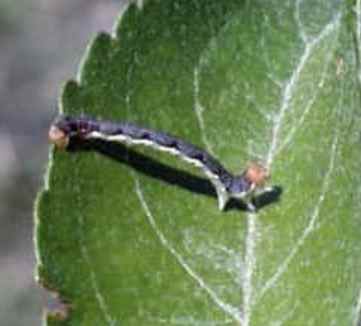|
Spring Cankerworm
View more pictures: Bing Images Google Images Yahoo Images Common names: Spring Cankerworm Scientific name: Paleacrita vernata Region: This Caterpillar is found in most of the United States and southern Canada. Life cycle: This insect produces one generation each year. Cankerworms hatch from eggs that are laid in late fall or early spring by wingless moths. Hibernation occurs in the soil. The moths appear in early spring. Physical Description: This 3/4 inch long caterpillar is light green to dark brown with white lines down its back, and has three pairs of prolegs. The adult moth is light brown to gray with translucent wings that span 1 inch. The brownish purple eggs are laid in masses under the bark of trees. Feeding characteristics: This pest attacks apple plants by feeding on foliage, often dangling from silk threads. They tend to appear in cycles of two to three years. Controls: A sticky band of compound, homemade or commercial, should be placed around the trunk of the tree in February to catch the female moth climbing up to lay its eggs. Tanglefoot is a good compound or even molasses or pine tar. The Potter Wasp, Trichogramma Wasp, and Spined Soldier Beetle are a predators of this caterpillar. For serious infestations, apply Bacillus thuringiensis. Return from Spring Cankerworm to Insects Q-T Encyclopedia of Garden Insects |
